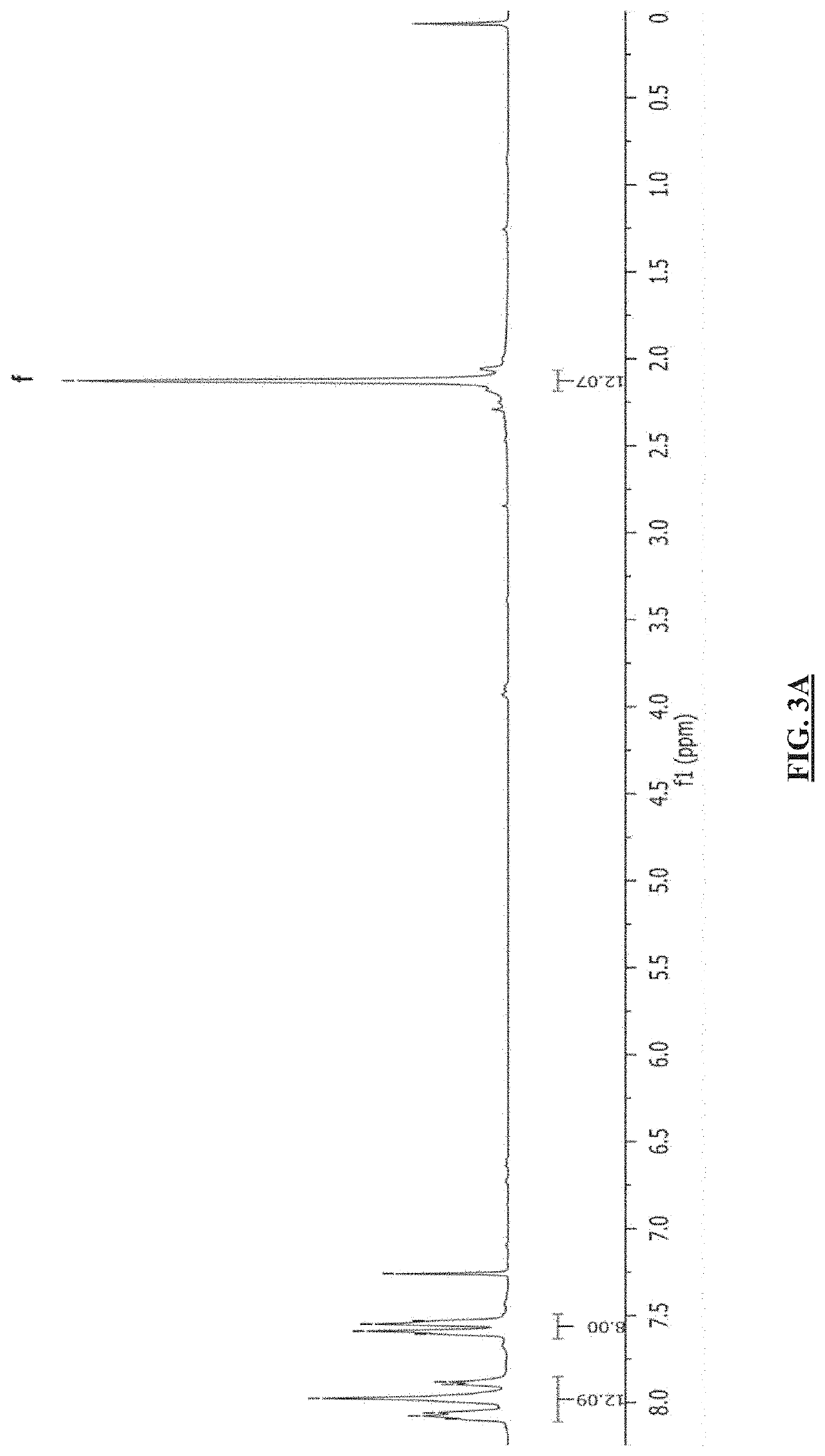AROMATIC CO-POLYIMIDE GAS SEPARATION MEMBRANES DERIVED FROM 6FDA-6FpDA-TYPE HOMO-POLYIMIDES
a technology of copolyimide and homo-polyimide, which is applied in the separation process, gaseous fuels, petroleum industry, etc., can solve the problems of corroding transportation pipelines, toxic hsub>2/sub>s, and harmful combustion of hsub>2/sub>s, so as to reduce the footprint, reduce the effect of energy consumption and flexible operation
- Summary
- Abstract
- Description
- Claims
- Application Information
AI Technical Summary
Benefits of technology
Problems solved by technology
Method used
Image
Examples
example 1
on of Aromatic Co-Polyimide Random 6FDA-Durene / 6FpDA and Block (6FDA-Durene) / (6FDA-6FpDA)
[0072]Series of random and block aromatic co-polyimides comprising 6FDA, durene diamine, and 6FpDA based-moieties (see for example FIG. 1) were synthesized according to the following procedures from 2,2′-bis-(3,4-dicarboxyphenyl) hexafluoropropane dianhydride (6FDA) (also known as 4,4′-(Hexafluoroisopropylidene) diphthalic anhydride) (obtained from Alfa Aesar); 2,3,5,6-tetramethyl-1,4-phenylenediamine (durene diamine) (obtained from TCI America); and 4,4′-(hexafluoroisopropylidene) dianiline (6FpDA) (obtained from TCI America). Solvents used included methanol (obtained from ThermoFisher Scientific) and m-cresol (obtained from Alfa Aesar). All the chemicals and the solvents used in the experiments discussed here were used as received without any further purification. In block co-polyimides of the present disclosure block length (l) / (m) in FIG. 1 can be about between (1,000-20,000) / (1,000-20,000),...
example 2
on of Aromatic Random Co-Polyimide 6FDA-CARDO / 6FpDA
[0078]Series of random aromatic 6FDA-CARDO / 6FpDA co-polyimides (see for example FIG. 2) were synthesized according to the following procedures from 2,2′-bis-(3,4-dicarboxyphenyl) hexafluoropropane dianhydride (6FDA) (also known as 4,4′-(Hexafluoroisopropylidene) diphthalic anhydride) (obtained from Alfa Aesar); 9,9-bis(4-aminophenyl) fluorene (CARDO) (obtained from TCI America); and 4,4′-(hexafluoroisopropylidene) dianiline (6FpDA) (obtained from TCI America). The solvents used included methanol (ThermoFisher Scientific) and m-cresol (Alfa Aesar). All the chemicals and the solvents used in this work were used as received without any further purification.
[0079]A random co-polyimide 6FDA-CARDO / 6FpDA (1:1) (millimoles CARDO:millimoles 6FpDA) (VI) was synthesized according to the following: In a 100-mL three-neck round bottom flask equipped with a nitrogen inlet and a mechanical stirrer, 6FpDA (1.500 g, 4.49 mmol), CARDO (1.564 g, 4.49 ...
PUM
| Property | Measurement | Unit |
|---|---|---|
| Pressure | aaaaa | aaaaa |
| Percent by volume | aaaaa | aaaaa |
| Temperature | aaaaa | aaaaa |
Abstract
Description
Claims
Application Information
 Login to View More
Login to View More - R&D
- Intellectual Property
- Life Sciences
- Materials
- Tech Scout
- Unparalleled Data Quality
- Higher Quality Content
- 60% Fewer Hallucinations
Browse by: Latest US Patents, China's latest patents, Technical Efficacy Thesaurus, Application Domain, Technology Topic, Popular Technical Reports.
© 2025 PatSnap. All rights reserved.Legal|Privacy policy|Modern Slavery Act Transparency Statement|Sitemap|About US| Contact US: help@patsnap.com



